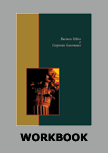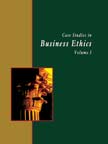Nike's Labor Practices




|
|
ICMR HOME | Case Studies Collection
Case Details:
Case Code : BECG018
Case Length : 12 Pages
Period : 1996 - 2001
Pub. Date : 2002
Teaching Note : Available
Organization : Nike, CBS News, Vietnam Labour Watch
Industry : Apparel and Footwear Industry
Countries : USA, Vietnam
To download Nike's Labor Practices case study (Case Code:
BECG018) click on the button below, and select the case from the list of available cases:

Price:
For delivery in electronic format: Rs. 300;
For delivery through courier (within India): Rs. 300 + Rs. 25 for Shipping & Handling Charges
»
Business Ethics Case Studies
» Case Studies Collection
» ICMR Home
» Short Case Studies
» View Detailed Pricing Info
» How To Order This Case
» Business Case Studies
» Case Studies by Area
» Case Studies by Industry
» Case Studies by Company

Please note:
This case study was compiled from published sources, and is intended to be used as a basis for class discussion. It is not intended to illustrate either effective or ineffective handling of a management situation. Nor is it a primary information source.
|
|
<< Previous
Breach of Code of Conduct Contd...
But analysts felt that in spite of some cosmetic measures, the company had not really shown any real interest in addressing the issue. Jim Cox, executive president of the New York based GCI group,5 said, "Nike has adopted a defensive attitude throughout. Recently, Nike seems to be grudgingly coming around to admitting something may be wrong but they missed an opportunity at the outset when they effectively said 'we're Nike and we're not doing anything wrong. We don't own these plants so they aren't our problem"...
Background Note
|
In 1958, Phil Knight, a keen athlete and an undergraduate at the University of Oregon, and his track coach Bill Bowerman realized the need for a good American running shoe. The track shoes produced by Adidas and Puma were made of leather, had little cushioning, and used steel spikes for traction.
Knight felt there was scope for improvement in these shoes. After graduating, Knight enrolled in the School of Business at Stanford University. At Stanford, Knight analyzed the shoe manufacturing industry and arrived at the conclusion that with cheap Japanese labor, an American manufacturer could sell track shoes that rivaled Adidas in quality, at significantly lower prices.
|
|
In 1964, Knight and Bowerman decided to form their own athletic shoe company and called it the Blue Ribbon Sports (BRS) Company. Bowerman's job was to test the shoes, offer design ideas, and persuade coaches he knew to endorse the shoes.
|
|
The company decided to specialize in designing and selling high-performance shoes made in Japan. In 1971, the duo developed a distinctive trademark and a new brand name. They named the brand Nike, after the Greek winged Goddess of Victory. A local Portland student, Carolyn Davidson, who was paid $35 for the design, created Nike's "Swoosh" symbol. The new Nike shoes were launched at the 1972 Olympic trials held in Eugene, Oregon. Knight and Bowerman quickly cashed in on the publicity by advertising that Nikes were worn by "four of the top seven finishers." During the first half of the 1970s, Nike's sales grew from $10 million to $270 million. The growth was facilitated by the creation of the waffle sole and the cushioning system (patented by Nike), known as Nike Air... |
Excerpts >>
|
|





